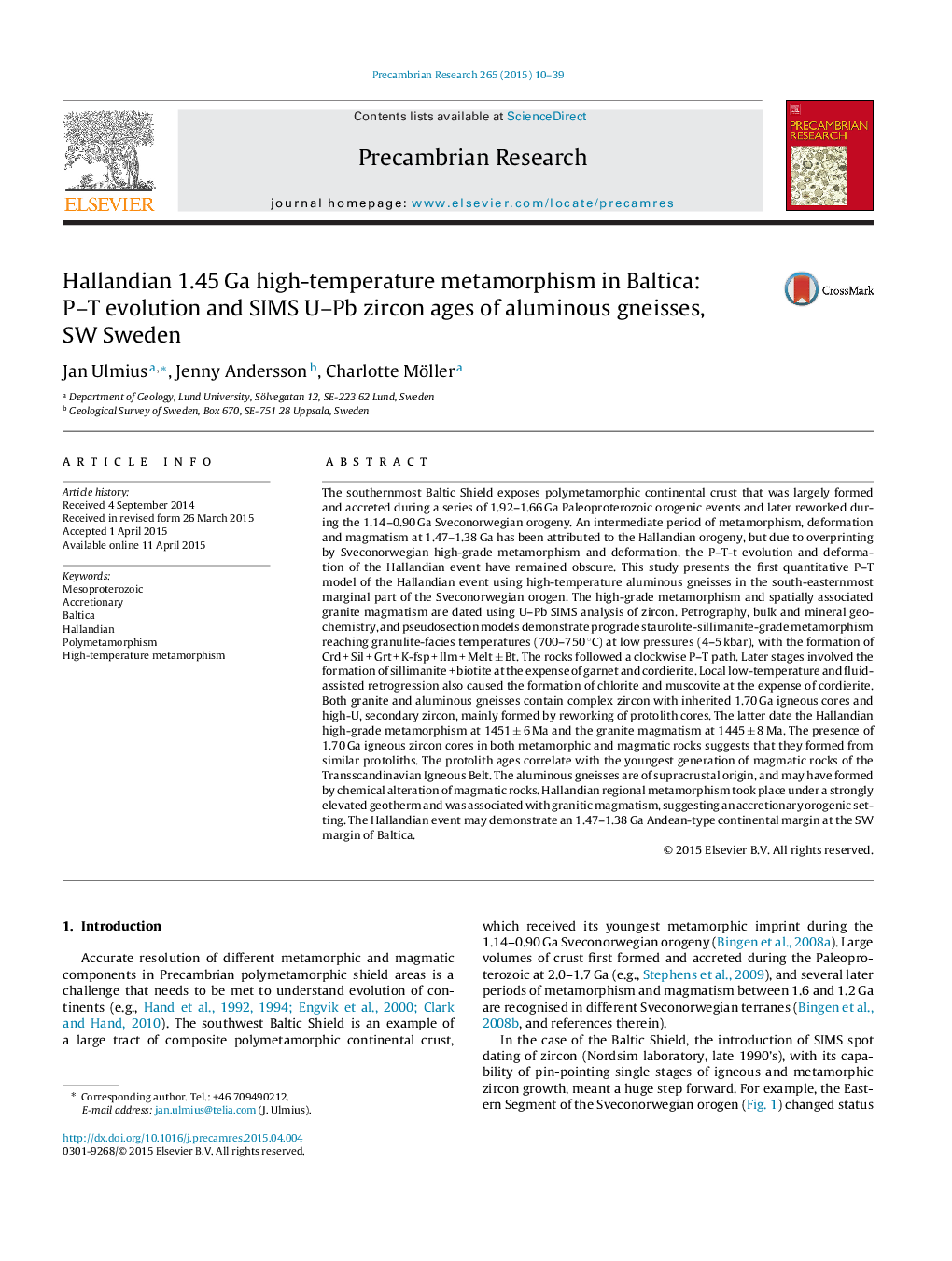| کد مقاله | کد نشریه | سال انتشار | مقاله انگلیسی | نسخه تمام متن |
|---|---|---|---|---|
| 4722651 | 1639610 | 2015 | 30 صفحه PDF | دانلود رایگان |

• Hallandian granulite facies low-P metamorphism in southern Baltica is dated at 1451 ± 6 Ma.
• We demonstrate a Hallandian clockwise orogenic P–T loop under a strongly elevated geotherm.
• An active Andean-type margin SW of Baltica is suggested for the period 1.47–1.38 Ga.
• The 1.47–1.38 Hallandian orogeny is not recorded in tectonic units west of the Mylonite Zone.
The southernmost Baltic Shield exposes polymetamorphic continental crust that was largely formed and accreted during a series of 1.92–1.66 Ga Paleoproterozoic orogenic events and later reworked during the 1.14–0.90 Ga Sveconorwegian orogeny. An intermediate period of metamorphism, deformation and magmatism at 1.47–1.38 Ga has been attributed to the Hallandian orogeny, but due to overprinting by Sveconorwegian high-grade metamorphism and deformation, the P–T-t evolution and deformation of the Hallandian event have remained obscure. This study presents the first quantitative P–T model of the Hallandian event using high-temperature aluminous gneisses in the south-easternmost marginal part of the Sveconorwegian orogen. The high-grade metamorphism and spatially associated granite magmatism are dated using U–Pb SIMS analysis of zircon. Petrography, bulk and mineral geochemistry, and pseudosection models demonstrate prograde staurolite-sillimanite-grade metamorphism reaching granulite-facies temperatures (700–750 °C) at low pressures (4–5 kbar), with the formation of Crd + Sil + Grt + K-fsp + Ilm + Melt ± Bt. The rocks followed a clockwise P–T path. Later stages involved the formation of sillimanite + biotite at the expense of garnet and cordierite. Local low-temperature and fluid-assisted retrogression also caused the formation of chlorite and muscovite at the expense of cordierite. Both granite and aluminous gneisses contain complex zircon with inherited 1.70 Ga igneous cores and high-U, secondary zircon, mainly formed by reworking of protolith cores. The latter date the Hallandian high-grade metamorphism at 1451 ± 6 Ma and the granite magmatism at 1445 ± 8 Ma. The presence of 1.70 Ga igneous zircon cores in both metamorphic and magmatic rocks suggests that they formed from similar protoliths. The protolith ages correlate with the youngest generation of magmatic rocks of the Transscandinavian Igneous Belt. The aluminous gneisses are of supracrustal origin, and may have formed by chemical alteration of magmatic rocks. Hallandian regional metamorphism took place under a strongly elevated geotherm and was associated with granitic magmatism, suggesting an accretionary orogenic setting. The Hallandian event may demonstrate an 1.47–1.38 Ga Andean-type continental margin at the SW margin of Baltica.
Figure optionsDownload as PowerPoint slide
Journal: Precambrian Research - Volume 265, August 2015, Pages 10–39